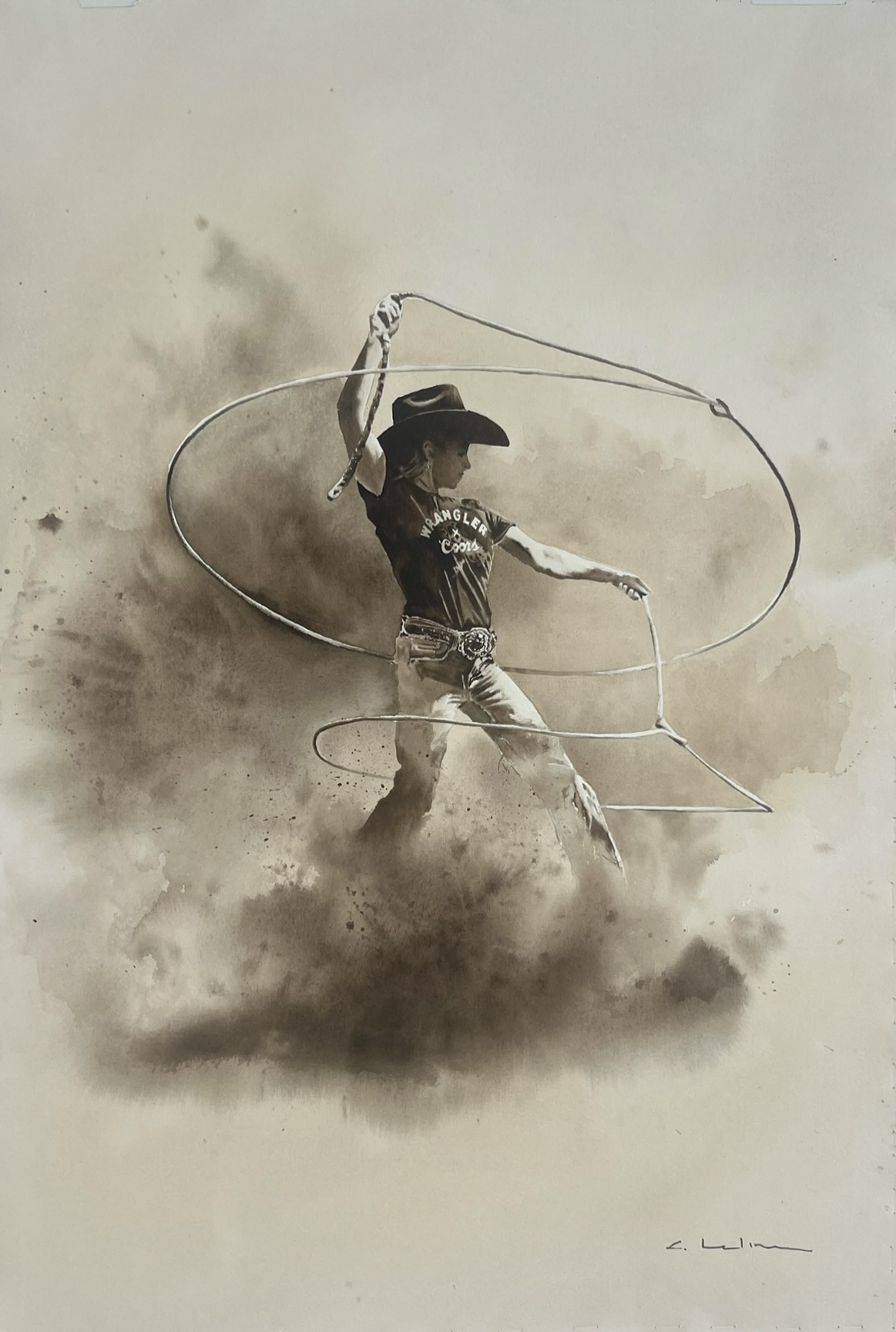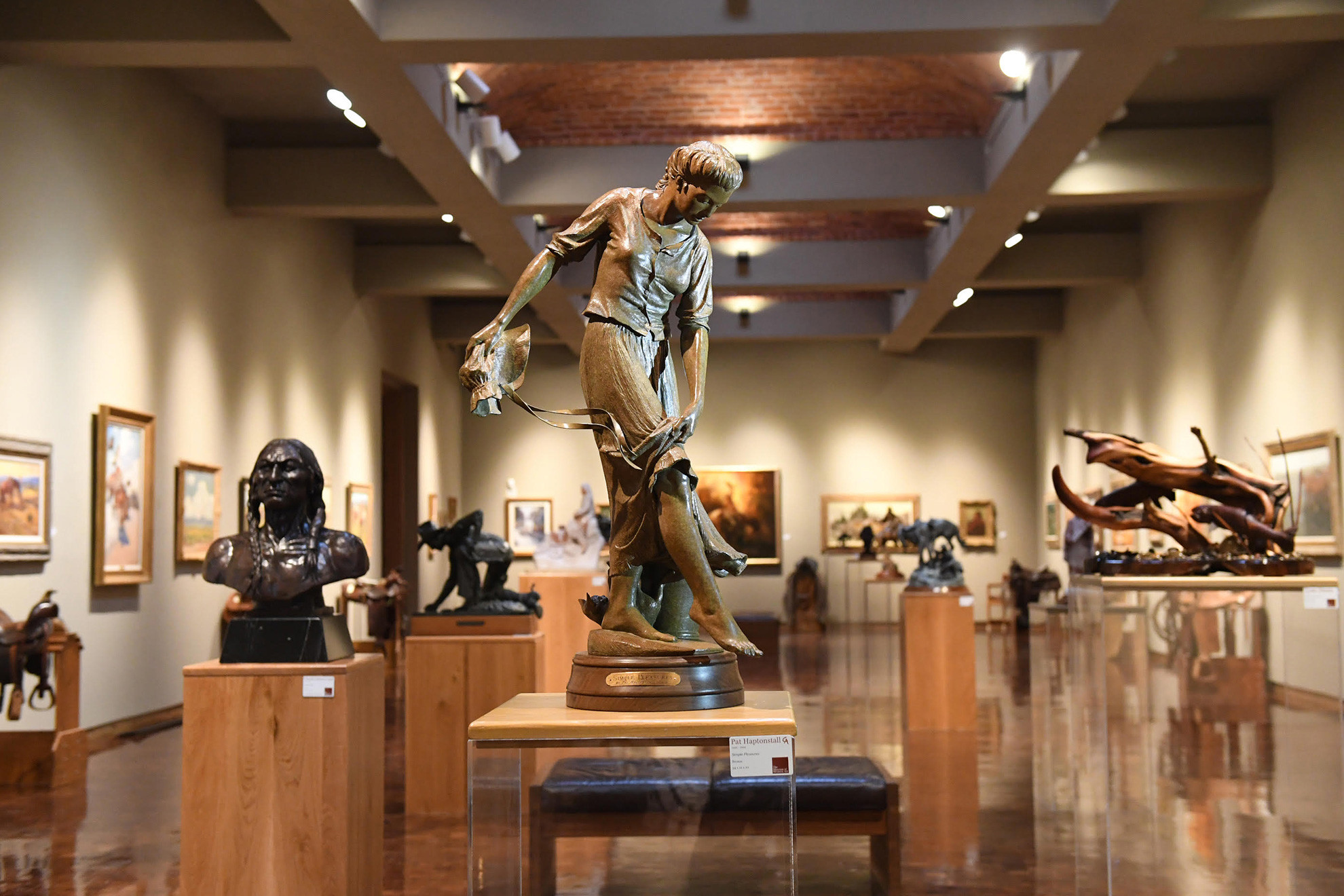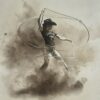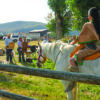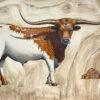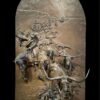Tim Allen Lawson loves trees and goes to great lengths to capture their natural beauty and texture. That explains why he has portions of trees hanging in his studio in Maine and has a variety of rather unconventional tools—including sandpaper, wire brushes, sticks, and steel wool—at the ready to help him as he paints.
“I always had a love affair with trees,” says Lawson, who has homes and studios in Sheridan, Wyoming, and in Rockport Maine. “My studio in Maine is heated with wood,” Lawson says, “and I would cut all my own firewood. I was fascinated with the bark of the trees, the beauty of the bark, so much so that I hung them in my studio like a virtual forest and was always looking at them. I decided to paint one of them and wanted to do it as realistically as I possibly could. It was my first step in trying to manipulate the paint to get the depth and texture of that tree. That bark had every spectrum; it was fascinating.”
Read the full article in the September/October 2020 issue.
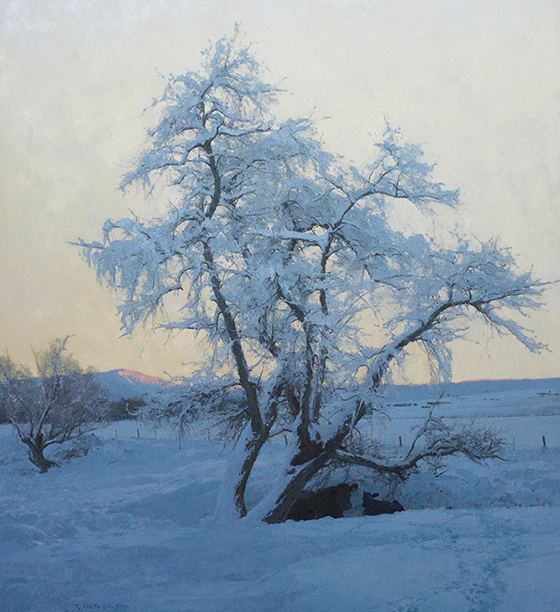
The Nursery Tree
Oil
35″ by 32″
“This was a rare snow for northern Wyoming. It was a snow that had just enough moisture to stick, coupled with an early morning where there was not a breath of wind, allowing the snow to cling to every branch for an extended time. Though this was painted entirely in the studio, I was able to complete a number of drawings in the field, which allowed me to capture the character of the snow-laden tree and the feeling of the bitter cold air. By painting the sky a slightly warmer neutral yellow, I was able to accentuate the crisp, cold feeling of the blue-violet snow. The touch of rosy warmth on the distant hill adds distance and a bit of contrast to the chilly morning.”
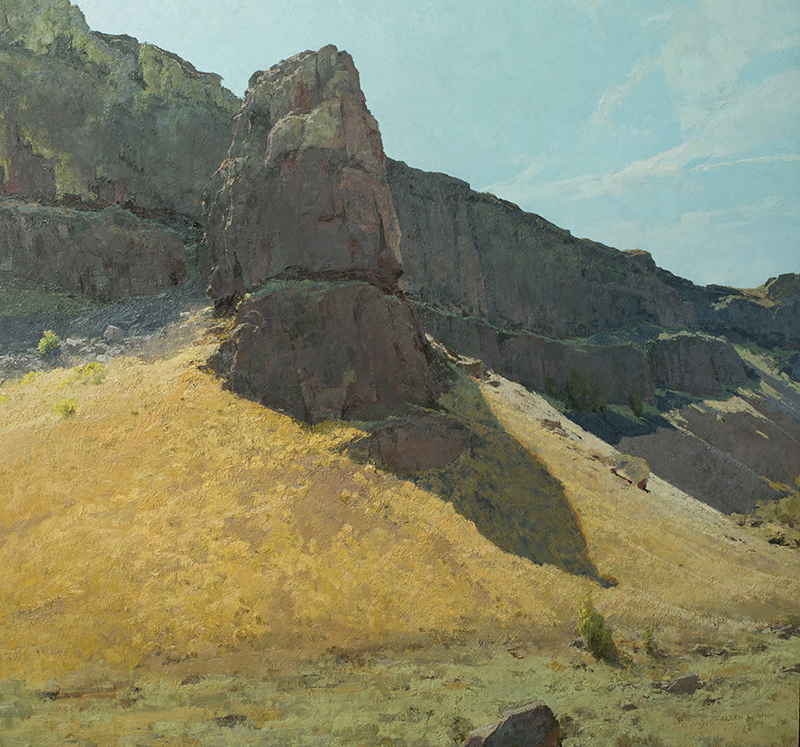
Basalt Sentinel
Oil
32″ by 34″
“I was first introduced to the Channeled Scablands in eastern Washington by my artist friend, George Carlson. It is one of the most unusual, visually spectacular landscapes I have ever seen. Scoured by glacial floods during the end of the last ice age, much of the topsoil was removed, exposing Basalt volcanic rock. The remaining shapes of rock create unlimited pictorial possibilities.”
